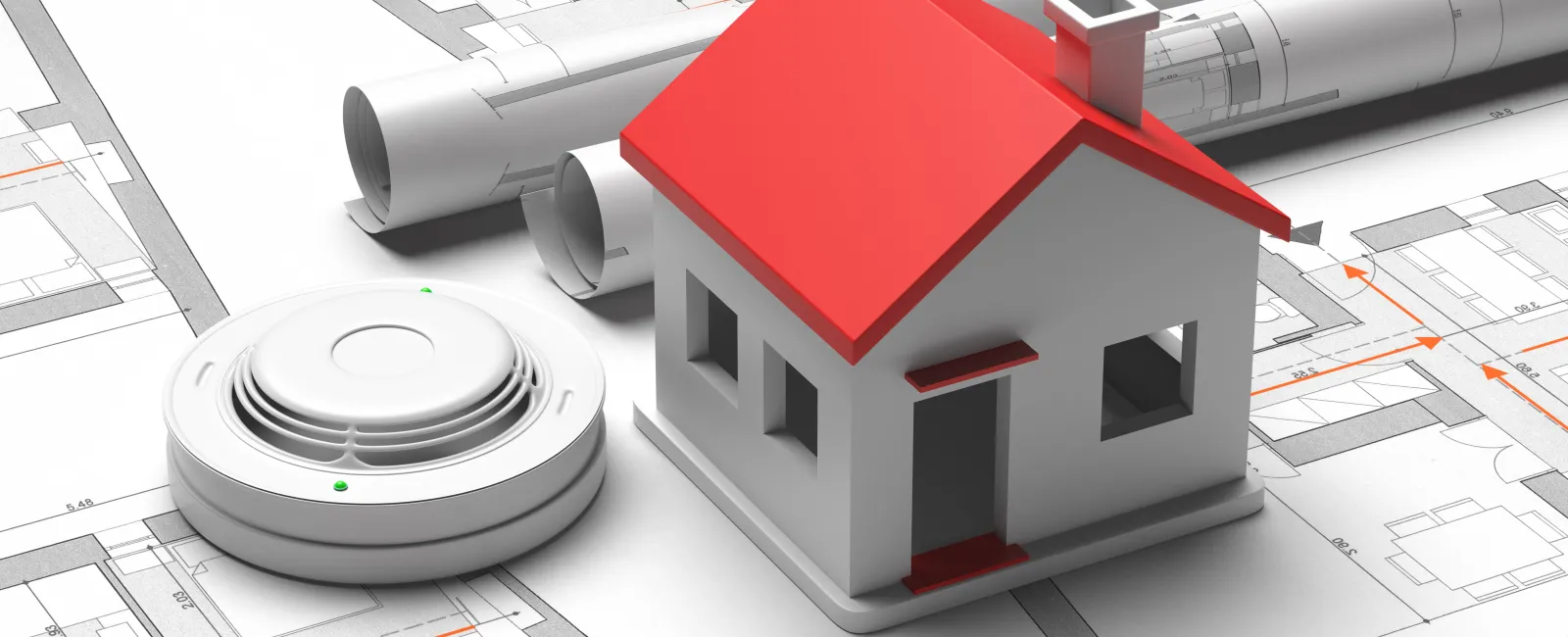Carbon monoxide is a highly toxic byproduct of fuel combustion. It's why your gas appliances and fireplaces need to be adequately vented, and more importantly, why you need carbon monoxide detectors in your home.
Because it's an odorless gas that's notoriously difficult to sense, manufacturers have developed carbon monoxide detectors to protect homeowners from accidental poisoning. That way, if unsafe levels of CO are detected in your home, you'll have time to escape.
To further explain how carbon monoxide detectors work, we'll review:
- The various kinds of CO detectors available (e.g., biomimetic, metal oxide, electrochemical)
- What to do when your CO detector goes off
We'll also discuss:
- Where and how to install CO detectors
- Integrating CO detectors with your home security system
With a solid detection system in place, you can breathe easy knowing that your family is safe and protected.
Want a free quote on a whole-home carbon monoxide detection system? Call Ackerman's home security experts at 800.552.1111 or get an instant quote through our website today. We'll make sure your home has expertly placed carbon monoxide detectors, complete with 24/7 monitoring.
The Various Kinds of CO Detectors Available
There are various kinds of carbon monoxide detectors on the market. They all employ different technologies, but they're equally effective at detecting unsafe CO gases.
The three most common include:
- Biomimetic. Biomimetic detectors harness a gel-like substance that changes color when it absorbs carbon monoxide. Once the color has changed, the alarm goes off.
- Metal oxide. Metal oxide detectors employ a semiconductor chip. If the chip comes into contact with carbon monoxide, the change in electrical resistance will cause the alarm to sound.
- Electrochemical. Using an electrochemical solution, this type of detector senses changes in electrical currents. If the sensor comes into contact with carbon monoxide, the change in current will trigger the alarm.
In addition to the various kinds of technologies, carbon monoxide detectors also come in different styles:
- Hardwired. You can have carbon monoxide detectors hardwired into your home. Either in tandem with smoke alarms or separately installed. The upside is that you'll never have to worry about maintenance (i.e., replacing batteries,) but if the power goes out, your monitors won't work.
- Battery-operated. For the sake of convenience and cost, many homeowners choose to install battery-operated CO detectors. A single monitor costs just $15 on average, and can be installed in less than five minutes. The downside is that you will have to be mindful of changing the batteries every so often.
What to Do When Your CO Detector Goes Off
Carbon monoxide alarms typically don't ring that loud. Rather, they tend to beep continuously, much like how a smoke alarm "chirps" when the batteries need changing.
That said, if you have a battery-operated CO alarm and it starts to beep about every 5 minutes, it's possible that you just need to change the batteries. But if you hear the alarm beep every 10 seconds, you'll want to exit the house immediately.
Make sure you get all children, pets, and household members to safety, and don't worry about your possessions— they'll be okay.
Once safely outdoors, call a licensed gas line technician to remediate the problem. And if you feel any flu-like symptoms, go to the emergency room immediately. Carbon monoxide is a severely dangerous gas to inhale, with potentially life-threatening health effects.
Note: We are not medical or public safety officials. If you have questions or concerns about carbon monoxide and its effects, visit the CDC's website here.
Where and How to Install CO Detectors
We recommend installing at least one CO detector on each floor of your home. However, that's at a bare minimum. Ideally, you should place a detector outside every bedroom of your home. That way, if there's a leak while you're sleeping, the alarm will sound before you accidentally ingest any poison.
Additionally, we recommend placing a carbon monoxide detector near every gas-powered appliance you have in your home. This includes but is not limited to fireplaces, cooking ranges/ovens, water heaters, clothes dryers, furnaces, etc.
Lastly, as carbon monoxide is a very lightweight gas, it's crucial to place your detectors near the ceiling and not close to doors or windows. If it can escape through drafty openings, the alarm may not be triggered.
Integrating CO Detectors with Your Home Security System
As we mentioned above, you can have carbon monoxide detectors hardwired into your home. Better still, you can then integrate them into your home security system.
Through the convenience of a touch screen tablet, you'll have complete visibility and control over the safety of your home. And if harmful levels of carbon monoxide are detected, you'll get immediate alerts sent straight to your phone.
For many homeowners, the added peace of mind is priceless!
Want a Free Quote On a Carbon Monoxide Detection System For Your Atlanta Home?
Call Ackerman Security at 800.552.1111 or get an instant quote online today. Not only do we install the latest carbon monoxide detection systems on the market, but we can also integrate your CO detector with your home security system. If unsafe levels of CO are detected in your home, you'll get instant alerts and can exit the premises immediately. For peace of mind and to protect your family's health and safety, contact Ackerman today.





